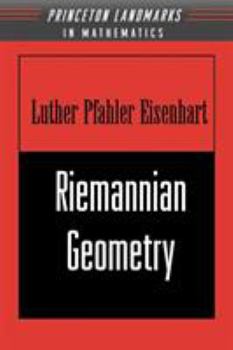Riemannian Geometry
Select Format
Select Condition 
Book Overview
In his classic work of geometry, Euclid focused on the properties of flat surfaces. In the age of exploration, mapmakers such as Mercator had to concern themselves with the properties of spherical surfaces. The study of curved surfaces, or non-Euclidean geometry, flowered in the late nineteenth century, as mathematicians such as Riemann increasingly questioned Euclid's parallel postulate, and by relaxing this constraint derived a wealth of new...
Format:Paperback
Language:English
ISBN:0691023530
ISBN13:9780691023533
Release Date:October 1997
Publisher:Princeton University Press
Length:272 Pages
Weight:1.00 lbs.
Dimensions:0.8" x 5.9" x 8.9"
Customer Reviews
0 rating





